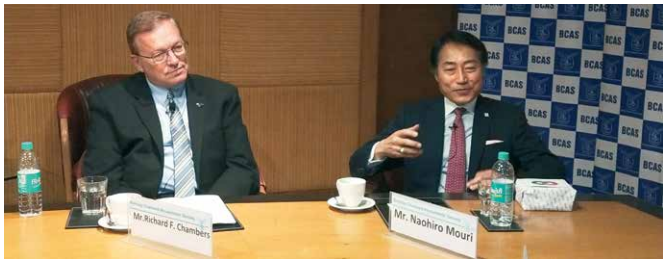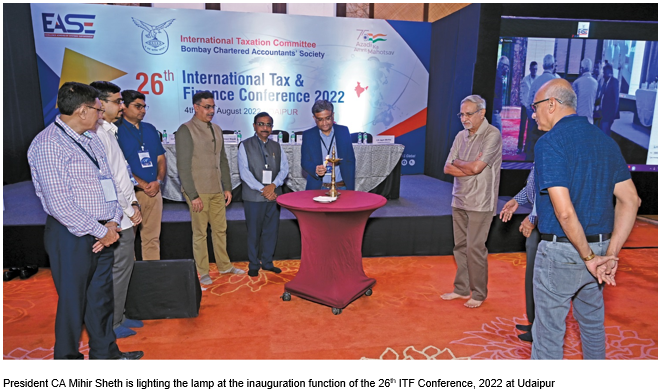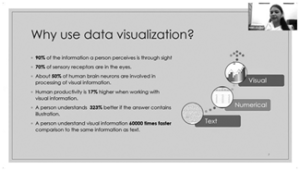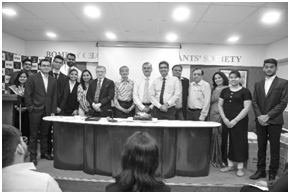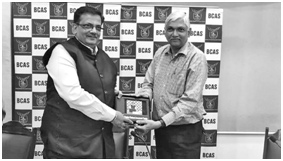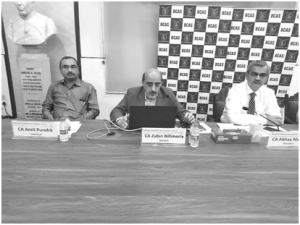A. KEY RECENT UPDATES
1. SEC – ENHANCED DISCLOSURES FOR SPACs AND SHELL COMPANIES
On 30th March 2022, the US Securities and Exchange Commission (SEC) proposed new rules to enhance disclosure and investor protection in IPOs by special purpose acquisition companies (SPACs) and in business combination transactions involving shell companies (such as SPACs and private operating companies). The proposals, inter-alia, include additional disclosures about SPAC sponsors, conflicts of interest and sources of dilution. Additional disclosures are required regarding business combination transactions between SPACs and private operating companies, including disclosures relating to the fairness of the transactions. [https://www.sec.gov/rules/proposed/2022/33-11048.pdf]
2. PCAOB – KEY CONSIDERATIONS FOR AUDITORS RELATED TO THE RUSSIAN INVASION OF UKRAINE
On 31st March, 2022, the Public Company Accounting Oversight Board (PCAOB) released a staff Spotlight document, Auditing Considerations Related to the Invasion of Ukraine, that highlights important considerations for auditors of issuers and broker-dealers in conducting audits in the current evolving geo-political environment. It covers a range of audit-related matters, including identifying and assessing risks, planning, and performing audit procedures, possible illegal acts, reviews of interim financial information, and acceptance and continuance of clients and engagements. The Spotlight also reminds auditors to remain aware of developments that may affect the issuer company. [https://pcaob-assets.azureedge.net/pcaob-dev/docs/default-source/documents/auditing-considerations-related-invasion-ukraine-spotlight.pdf?sfvrsn=19dc6043_3]
3. IAASB – STANDARD FOR GROUP AUDITS MODERNIZED IN SUPPORT OF AUDIT QUALITY
On 7th April, 2022, the International Auditing and Assurance Standards Board (IAASB) released International Standard on Auditing (ISA) 600 (Revised), Special Considerations – Audits of Group Financial Statements (Including the Work of Component Auditors). The revised ISA includes a robust risk-based approach to planning and performing a group audit. The approach focuses the group auditor’s attention and work effort on identifying and assessing the risks of material misstatement of the group financial statements and designing and performing further audit procedures to respond to those assessed risks. It also recognizes that component auditors can be, and often are, involved in all phases of the group audit. The revised standard promotes a clear, proactive, and scalable approach for group audits that can be applied to current evolving group audit structures. The revised standard is effective for audits of group financial statements for periods beginning on or after 15th December, 2023. [https://www.iaasb.org/publications/international-standard-auditing-600-revised-special-considerations-audits-group-financial-statements]
4. IESBA – UNIVERSE OF ENTITIES THAT ARE PUBLIC INTEREST ENTITIES (PIEs) EXPANDED
On 11th April, 2022, the International Ethics Standards Board for Accountants (IESBA) released a revised definition of a PIE and other revised provisions in the International Code of Ethics for Professional Accountants (including International Independence Standards). The revised provisions specify a broader list of categories of entities as PIEs whose audits should be subject to additional independence requirements to meet stakeholders’ heightened expectations concerning auditor independence when an entity is a PIE. The revisions: articulate an overarching objective for additional independence requirements for audits of financial statements of PIEs; provide guidance on factors to consider when determining the level of public interest in an entity and replaces the term ‘listed entity’ with a new term ‘publicly traded entity’. The revised PIE definition and related provisions are effective for audits of financial statements for periods beginning on or after 15th December, 2024. [https://www.ethicsboard.org/publications/final-pronouncement-revisions-definitions-listed-entity-and-public-interest-entity-code]
5. IAASB – ‘ENGAGEMENT TEAM’ – QUALITY MANAGEMENT STANDARDS
And on 2nd May, 2022, the IAASB released a Fact Sheet, ISA 220 (Revised), Definition of Engagement Team, to facilitate users of auditing standards to adapt to the clarified and updated definition of ‘Engagement Team’. The fact sheet addresses the clarified definition and its possible impacts, including the recognition that engagement teams may be organized in various ways, including across different locations or by the activity they are performing. The fact sheet also includes a diagram that walks users through who specifically is included and excluded. It may be noted that the new definition of ‘engagement team’ applies to ISAs and ISQMs. [https://www.iaasb.org/publications/isa-220-revised-definition-engagement-team-fact-sheet]
• INTERNATIONAL FINANCIAL REPORTING MATERIAL
1. IFAC – Exploring the IESBA Code, A Focus on Technology – Artificial Intelligence. [11th March, 2022.]
2. IFAC – Auditing Accounting Estimates: ISA 540 (Revised) Implementation Tool. [5th April, 2022.]
3. IFAC – Audit Fees Survey 2022: Understanding Audit and Non-Audit Service Fees, 2013-2020. [25th April, 2022.]
4. IFAC – Mindset and Enabling Skills of Professional Accountants – A Competence Paradigm Shift – Thought Leadership Series. [27th April, 2022.]
5. UK FRC – Supply Chain Disclosure – Lab Insight. [29th April, 2022.]
6. IAASB – The Fraud Lens – Interactions Between ISA 240 and Other ISAs – A Non-authoritative Guidance on Fraud in an Audit of Financial Statements. [5th May, 2022.]
B. EVOLUTION AND ANALYSIS OF ACCOUNTING CONCEPTS – LIFO
SETTING THE CONTEXT
The objective of inventory valuation for financial reporting purposes is to facilitate periodic income determination. Accounting frameworks guide the determination of inventory costs and the related cost formulas. The cost formula to be used is a function of whether the inventories held by a reporting entity are ‘ordinarily interchangeable’ or ‘not ordinarily interchangeable’. For instance, generally across prominent GAAPs dealt in this feature, the ‘specific identification method’ must be used for inventories that are not ordinarily interchangeable or segregated for specific projects. However, in the case of other inventories, barring US standards, inventory cost can be assigned using either the ‘first-in, first-out’ (FIFO) or ‘weighted average’ cost formula. USGAAP permits the use of the ‘last-in, first-out’ (LIFO) cost formula too.
In the US, LIFOs entry into the accounting literature and the vehement resistance to its repeal is courtesy of US tax laws. Using LIFO for tax purposes while using FIFO for financial reporting purposes provided the advantage of reporting higher accounting earnings to shareholders. For this reason, the ‘LIFO conformity rules’ were instituted in the US tax laws– whereby a company that opts to use LIFO for tax purposes must compulsorily use LIFO for financial reporting purposes. Historically, companies that desired to save taxes pressurised regulators to embed it in USGAAP. It may also be noted that a significant showstopper for a complete USGAAP convergence with IFRS has been LIFO.
Under IFRS (IAS 2), LIFO was an accepted cost formula until its prohibition effective 2005. The IASB believed that tax considerations do not provide an adequate conceptual basis for selecting an appropriate accounting treatment and that it is not acceptable to allow an inferior accounting treatment purely because of tax regulations and advantages in particular jurisdictions. [IAS 2. BC 20.] (emphasis supplied)
THE POSITION UNDER PROMINENT GAAPS
US GAAP
HISTORICAL DEVELOPMENTS
The genesis of the LIFO concept (as a basis for accounting inventories) can be traced to the base stock method. Base stock is a minimum inventory quantity identified as essential in certain operations to maintain continuity, with the cost of minimum inventories being analogous to investment in fixed assets. The base tock method assigns an arbitrary/ nominal cost basis to such fixed minimum quantity (the base quantity being carried forward from year to year at its original cost or an arbitrary nominal cost). In the United States, this method was disallowed for income tax purposes in the 1920s, with LIFO adopted as a substitute. The American Petroleum Institute recommended the adoption of LIFO for the oil industry in 1934 which was approved by a special committee of the American Institute of Accountants (in 1936). In 1938, Congress amended the tax law to recognize LIFO as an acceptable method for specified sectors. The tax law was further amended in 1939, permitting LIFO to all industries, with the condition that taxpayers using LIFO must compulsorily use it for general financial reporting purposes, too (LIFO Conformity Requirement Rules).
According to Accounting Research Study (ARS) No. 13, Accounting Basis of Inventories, a non-official pronouncement of the AICPA issued in 1973: ‘LIFO is a compromise method of achieving a matching of costs and revenue recommended under base stock theory, without a theory of its own. It is not a method of determining cost of products as such. It is, instead, a method of matching costs and revenue under an artificial assumption that dissociates the flow of cost incurrence from the physical flow of product’.
The first general pronouncement on inventories issued by the American Institute of Certified Public Accountants’ (AICPA) Committee on Accounting Procedure (CAP) was Accounting Research Bulletin (ARB) No. 29, Inventory Pricing. The bulletin issued in July, 1947, contained the following statement and discussion in the context of the fact that one of several cost flow assumptions may be made to arrive at the financial accounting basis of inventories:
Statement 4 – ‘Cost for inventory purposes may be determined under any one of several assumptions as to the flow of cost factors (such as “first-in first out,” “average,” and “last-in first-out”); the major objective in selecting a method should be to choose the one which, under the circumstances, most clearly reflects periodic income.’
Extracts of accompanying discussion to Statement 4 – The cost to be matched against revenue from a sale may not be the identified cost of the specific item which is sold, especially in cases in which similar goods are purchased at different times and at different prices. Ordinarily, under those circumstances, the identity of goods is lost between the time of acquisition and the time of sale. In any event, if the materials purchased in various lots are identical and interchangeable, the use of identified cost of the various lots may not produce the most useful financial statements. This fact has resulted in the development and general acceptance of several assumptions with respect to the flow of cost factors to provide practical bases for the measurement of periodic income. These methods recognize the variations which exist in the relationships of costs to sales prices under different economic conditions. These methods recognize the variations which exist in the relationships of costs to sales prices under different economic conditions. Thus, where sales prices are promptly influenced by changes in reproductive costs, an assumption of the “last-in first- out” flow of cost factors may be the more appropriate. Where no such cost-price relationship exists, the “first-in first-out” or an “average” method may be more properly utilized.’
In 1953, ARB No. 43 – Restatement and Revision of Accounting Research Bulletins were issued by the Accounting Principles Board (APB), which superseded the CAP, consolidating all the previously published 42 bulletins. Chapter No. 4, Inventory Pricing of ARB No. 43, carried forward the guidance in ARB No. 29 (except for the description of the circumstances under which various cost flows might be appropriate).
CURRENT POSITION
It may be noted that the Statement No.4 of ARB No. 29 (Issued 1947) discussed above is also the current codified USGAAP Topic 330, Inventory.
Accounting Standards Codification, Topic 330 – Inventory issued by the IASB states as follows:
‘Cost for inventory purposes may be determined under any one of several assumptions as to the flow of cost factors, such as first-in first-out (FIFO), average, and last-in first-out (LIFO). The major objective in selecting a method should be to choose the one which, under the circumstances, most clearly reflects periodic income’. [USGAAP 330-10-30-9.]
IFRS
HISTORICAL DEVELOPMENTS
IAS 2, Inventories (issued in 1993 and that replaced IAS 2, Valuation and Presentation of Inventories in the Context of the Historical Cost System issued in 1975) and an interpretation (SIC – 1, Consistency – Different Cost Formulas for Inventories) provided an accounting alternate in the form of a ‘benchmark treatment’, and an ‘allowed alternative treatment’. For inventories, the benchmark treatment required either the FIFO or weighted average cost formulas. The allowed alternative was the LIFO cost formula.
The IASB made limited revisions to IASs in 2003 as part of its Improvements Project undertaken in the light of criticisms raised by securities regulators and other stakeholders. The project’s objectives were to reduce or eliminate alternatives, redundancies and conflicts within the standards, deal with some convergence issues, and make other improvements. For IAS 2, the Board’s main objective was a limited revision to reduce alternatives for the measurement of inventories.
The Board decided to eliminate the LIFO method because of its lack of representational faithfulness of inventory flows. This decision does not rule out specific cost methods that reflect inventory flows similar to LIFO. [IAS 2 BC.18.] Accordingly, LIFO was prohibited under IFRS effective 1st January, 2005.
CURRENT POSITION
The relevant extracts from extant IFRS (IAS 2, Inventories) are provided below.
‘The cost of inventories of items that are not ordinarily interchangeable and goods or services produced and segregated for specific projects shall be assigned by using specific identification of their individual costs.’ [IAS 2.23.]
‘The cost of inventories, other than those dealt with in paragraph 23, shall be assigned by using the first-in, first-out (FIFO) or weighted average cost formula. An entity shall use the same cost formula for all inventories having a similar nature and use to the entity. For inventories with a different nature or use, different cost formulas may be justified.’ [IAS 2.25.]
AS
CURRENT POSITION
AS 2, Valuation of Inventories permits only the FIFO and weighted average cost formula. As per the standard, ‘the cost of inventories of items that are not ordinarily interchangeable and goods or services produced and segregated for specific projects should be assigned by specific identification of their individual costs.’ [AS 2.14.] And para 16 of AS 2 states – ‘The cost of inventories, other than those dealt with in paragraph 14, should be assigned by using the first-in, first-out (FIFO), or weighted average cost formula. The formula used should reflect the fairest possible approximation to the cost incurred in bringing the items of inventory to their present location and condition.’
THE LITTLE GAAPS
US FRF FOR SMEs
Chapter 12, Inventories of the AICPA’s US Financial Reporting Framework for Small and Medium-Sized Entities (FRF for SMEs), a self-contained framework not based on USGAAP provides related guidance as follows:
The cost of inventories of items that are not ordinarily inter-changeable, and goods or services produced and segregated for specific projects, should be assigned by using specific identification of their individual costs. [12.16.]
The cost of inventories, other than those dealt with in paragraph 12.16, should be assigned by using the first in, first out (FIFO), last in, first out (LIFO), or weighted average cost formulas. [12.18.]
IFRS FOR SMEs
International Financial Reporting Standard for Small and Medium-sized Entities (IFRS for SMEs), Section 13, Inventories prohibits the use of the LIFO method. Relevant extracts are provided below.
An entity shall measure the cost of inventories of items that are not ordinarily interchangeable and goods or services produced and segregated for specific projects by using specific identification of their individual costs. [13.17.]
An entity shall measure the cost of inventories, other than those dealt with in paragraph 13.17, by using the first-in, first-out (FIFO) or weighted average cost formula. An entity shall use the same cost formula for all inventories having a similar nature and use to the entity. For inventories with a different nature or use, different cost formulas may be justified. The last-in, first-out method (LIFO) is not permitted by this Standard. [13.18.]
C. GLOBAL ANNUAL REPORT EXTRACTS – DISCLOSURE: COMPETITIVE TENDER PROCESS FOR STATUTORY AUDITOR APPOINTMENT
BACKGROUND
The Statutory Audit Services for Large Companies Market Investigation (Mandatory Use of Competitive Tender Processes and Audit Committee Responsibilities) Order 2014 applies to providing statutory audit services in the UK to large companies. The provisions of the Order (effective 1st January, 2015) apply to a Company from the date on which it enters the FTSE 100 or FTSE 250 index until the date on which it ceases to be an FTSE 350 Company.
The relevant extracts from the Order are provided below.
‘3.1 An Auditor and a FTSE 350 Company must not enter into or give effect to a Statutory Audit Services Agreement unless:
(a) subject to Article 6, the FTSE 350 Company has made an Auditor Appointment pursuant to a Competitive Tender Process in relation to one or more of the preceding nine consecutive Financial Years or has conducted a Competitive Tender Process for an Auditor Appointment in relation to the Financial Year immediately following these preceding nine consecutive Financial Years; and
(b) the terms of the Statutory Audit Services Agreement, including, to the extent permissible by law and regulations, the Statutory Audit fee and the scope of the Statutory Audit, have been negotiated and agreed only between:
(i) the Audit Committee, either acting collectively or through its chairman, for and on behalf of the board of directors; and
(ii) the Auditor; and
(c) the provisions of Article 4 have been complied with.’
In this context, ‘competitive tender process’ means a process by which a Company invites and evaluates bids for the provision of statutory audit services from two or more Auditors.
The Order mandates in-scope companies to include a statement of compliance with the provisions of the Order in the Audit Committee Report for each Financial Year. [Part 7.1.]
EXTRACTS FROM ANNUAL REPORTS
1. Taylor Wimpey Plc, (FTSE 100 index constituent); 2021 Revenue – £4.3 billion
Audit Committee Report [2021 Annual Report]
Statement of Compliance
The company has complied throughout the reporting year with the provisions of The Statutory Audit Services for Large Companies Market Investigation (Mandatory Use of Competitive Tender Processes and Audit Committee Responsibilities) Order 2014.
2. Vodafone Group Plc, (FTSE 100 index constituent); 2021 Revenue – €43 billion
Audit Committee Report [2021 Annual Report]
External Audit
The Committee will continue to review the auditor appointment and anticipates that the audit will be put out to tender at least every 10 years. The Company has complied with the Statutory Audit Services Order 2014 for the financial year under review. The last external audit tender took place in 2019 which resulted in the appointment of EY.
3. InterContinental Hotels Group Plc, (FTSE 100 index constituent); 2019 Revenue – $ 4.6 billion
Audit Committee Report [2019 Annual Report]
Audit tender
In accordance with regulations mandating a tender for the 2021 financial year, the Group conducted an audit contract tender in 2019. A sub-committee, including members of the Audit Committee, was established to manage and govern the audit tender process and was accountable to the Audit Committee, which maintained overall ownership of the tender process and ensured that it was run in a fair and balanced manner. The sub-committee was supported by a project team, led by the Group Financial Controller. A summary of the timeline and key activities carried out during the tender process is set out below:
• The request for proposal was issued to firms in May 2019. A data room was established to provide the firms with sufficient information to be able to establish an audit plan. A Q&A process was also set up through a centralised mailbox, allowing the firms to ask questions on the content of the data room or request further information.
• The audit firms participated in a series of meetings with management, which provided a forum for the firms to ask questions arising from their review of the data room, as well as enabling management to interact directly with each proposed audit team.
• Each firm met with the Chair of the Audit Committee.
• Due diligence activities conducted as part of the tender process included:
– Consideration of the Competition and Market Authority’s review of the effectiveness of competition in the audit market and Sir John Kingman’s independent review of the FRC;
– A review of audit quality reports on the firms issued by the FRC and the Public Company Accounting Oversight Board;
– Each firm completed an independence return, which were reviewed to assess consistency with the Company’s own assessment; and
• Reference checks with comparable companies were completed.
• Written proposals were received in June 2019 and the participating firms presented their proposals to the sub- committee in July 2019.
The principal evaluation criteria used to assess the firms were:
• Audit Quality, including the firm’s internal and external audit inspection results, the ongoing work in respect of quality being undertaken by the firm, how the firm will execute group oversight in areas of significant risk, and how the firm will challenge management; and
• Experience and Capability of each firm to address IHG’s structure and its areas of uniqueness.
Following a detailed review of the performance of each firm and an evaluation against all of the criteria, the sub-committee recommended Pricewaterhouse Coopers LLP (PwC) as its preferred candidate. The factors contributing to the selection of PwC as the preferred candidate included its understanding of the complexities specific to IHG including IHG Rewards Club and the impact of a shared service centre structure on the audit; external quality ratings across the past six years, and the firm’s response to quality findings; internal quality ratings for the proposed team; clear insight into IHG’s control environment; and a robust approach to the audit of IT.
In accordance with statutory requirements, a report on the tender selection procedure and conclusions was prepared and validated by the Audit Committee. The Audit Committee and subsequently the Board approved the recommendation to appoint PwC. In August 2019, the Company announced the Board’s intention to propose to shareholders at the 2021 AGM that PwC be appointed as the Company’s statutory auditor for the financial year ending 31 December 2021.
EY will remain the Group’s auditor for the financial year ending 31 December 2020. Over the intervening period PwC and IHG will run the transition process. The principal activities completed so far include reviewing non-audit services provided to the Group and taking appropriate steps to achieve audit independence during the first half of 2020.
The Group confirms that it has complied with the requirements of The Competition and Markets Authority Statutory Audit Services for Large Companies Market Investigation (Mandatory Use of Competitive Tender Processes and Audit Committee Responsibilities) Order 2014, which relates to the frequency and governance of tenders for the appointment of the external auditor and the setting of a policy on the provision of non-audit services.
D. FROM THE PAST – ‘RESTORING PUBLIC CONFIDENCE IS SOMETHING THAT THE PROFESSION ITSELF MUST DO’
Extracts from a speech by Daniel L. Goelzer (PCAOB Board Member) at the Investment Company Institute Tax Conference held in 2003:
“It has become commonplace for observers of the accounting profession to open speeches by asserting that the profession is in the midst of the greatest crisis in public confidence in its history. That may well be true. However, it is useful to keep in mind that the profession’s evolution over the last century has been marked by a series of crises, followed by tougher standards and renewed commitment to the public interest. In fact, an argument can be made that the accounting scandal with the most far-reaching impact on the way auditors do their work occurred, not in the 1990s at Enron’s offices in Houston or at WordCom’s headquarters in Mississippi, but during the 1930s in Bridgeport, Connecticut.
Sixty-five years ago, McKesson & Robbins, a pharmaceutical company listed on the New York Stock Exchange and the predecessor of today’s McKesson Corporation, was the focus of the most infamous audit failure in U.S. history.
The corporate collapses, audit failures, and litany of restatements — and the resulting losses suffered by average investors — that marked the last several years have bred deep cynicism and public anger. A good share of that anger and cynicism is directed at the accounting profession. In my view, it is critical to the long-term health of our capital markets that that phenomenon be reversed, and that the public once again view auditors as watchdogs of corporate integrity, rather than as lapdogs of their corporate clients.
I believe that the Board’s aggressive implementation of the blueprint Congress laid out in the Sarbanes-Oxley Act will go a long way toward accomplishing that goal. Ultimately, however, restoring public confidence is something that the profession itself must do.”

